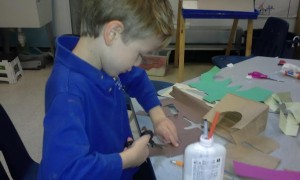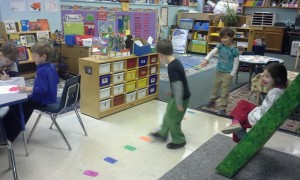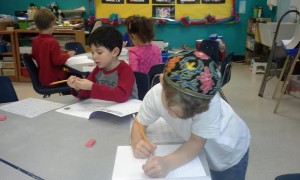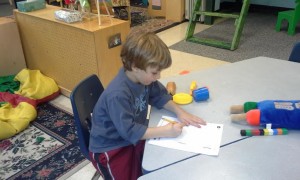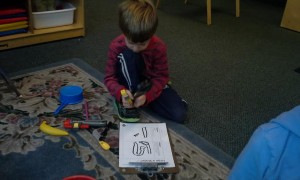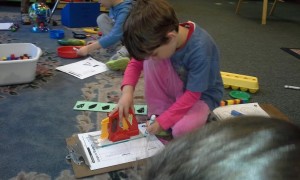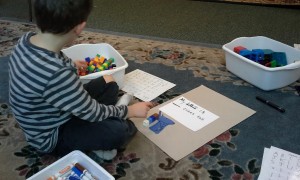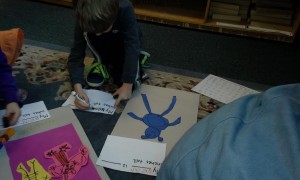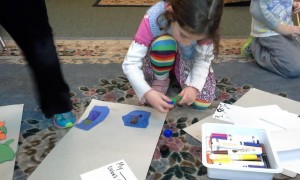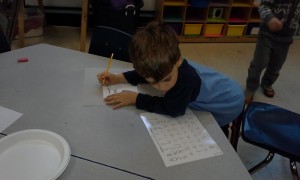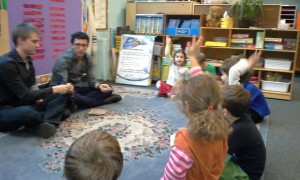This past week, we read Bear Snores On, which is a book about animals throwing a party in a bear’s cave while he is attempting to hibernate. The children created their own bear caves out of paper bags.
We practiced identifying our new amazing words in songs and stories, and frequently incorporated these words into our daily conversations!
- winter
- woods
- storm
- cave
- sleep
- blustery
We learned a new song about a bear:
(To the tune of Hush Little Baby)
Hush, little brown bear in the woods,
You’d sleep through the winter if you could.
And if the winter continues to storm,
Stay in your cave all safe and warm.
And if it’s still blustery and cold,
You’ll always have your mama’s hand to hold.
Hush, little brown bear in the woods,
You’d sleep through the winter if you could.
Our word walk is getting longer, and the children have been enthusiastically utilizing it! We’ve jumped from word to word to create sentences, practiced long jumps to see which words we land on, and even used it to refer to the spelling of some words for our journal writing. These are the sight words in our word walk:
- I
- am
- the
- little
- a
- have
- is
- we
- my
- like
We’ve been learning about measurement in math. Using towers of ten Unifix cubes, we found various objects in our classroom and categorized the items into two groups: those items that were taller than a tower of ten cubes and the items that were shorter than a tower of ten cubes.
The children also created animal characters from Bear Snores On, including the bear, hare, raven, mole, and mouse. Afterwards, they measured the animals and determined that the bear was the tallest animal (16 cubes) and the mouse was the shortest (2 cubes).
In Hebrew, we learned about the letters dalet and gimmel. We read Hadag Kaspion, and learned that the word delet (door) begins with a dalet. Each child created their own delet and illustrated the location behind it, including a bedroom, toy room, ark, etc. The children also made a degel (flag) from the shape of the letter dalet.
For the letter gimmel, we discovered that when you put two gimmels together, you can make a gamal (camal). We read about Eliezer and the Gezer (carrot) and spread g’veena (cheese) on crackers. We wrote the letter gimmel with gezer (a carrot) on the g’veena (cheese).
When we were talking about Parashat Noah, we talked about the importance of keeping a promise. The children decided that “When you don’t keep your promises, it will be hard to trust you again.”
A majority of Parashat Noah was told in Hebrew! The children followed along and identified many words such as arie (lion), kof (monkey), keshet (rainbow), yam (sea) and many more!
This week we had our first Brown/RISD STEAM (Science, Technology, Engineering, Arts and Math) session! Using pieces of cardboard and string, the children were instructed to weave the string around the cardboard in order to reach a given number by counting by groups of two, three, etc. The children discovered that they could reach the number six by weaving the string around and counting by twos; however, they were unable to reach the number five when only counting by twos. We are excited to welcome our guests back to our classroom this week to continue the lesson!
